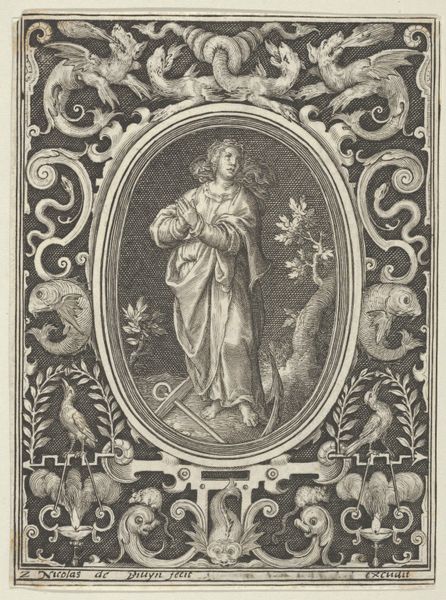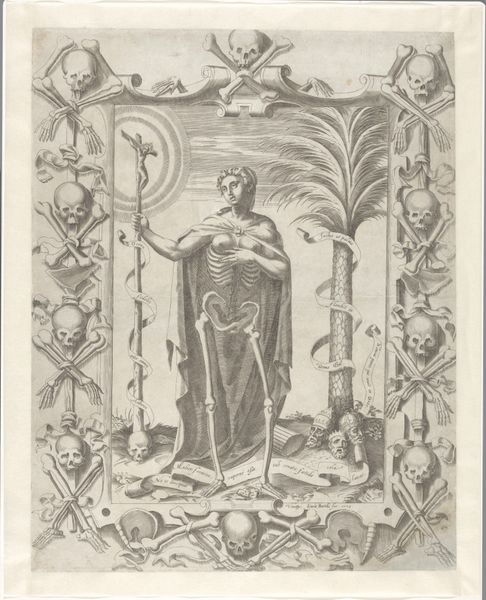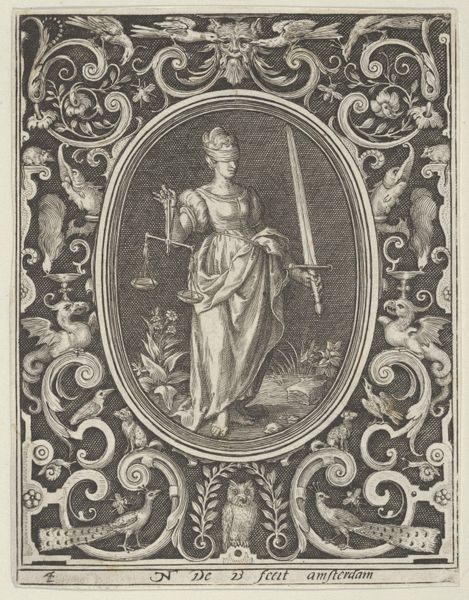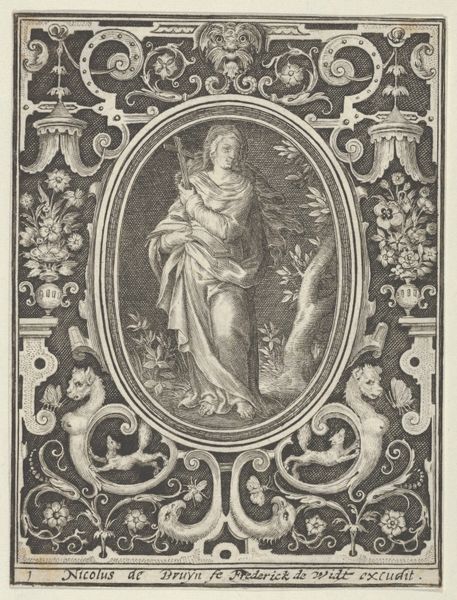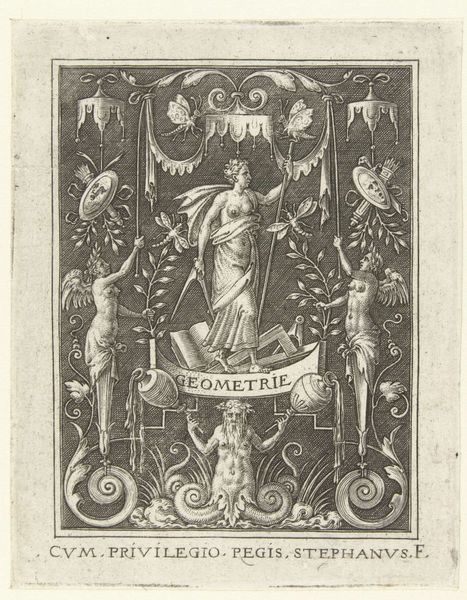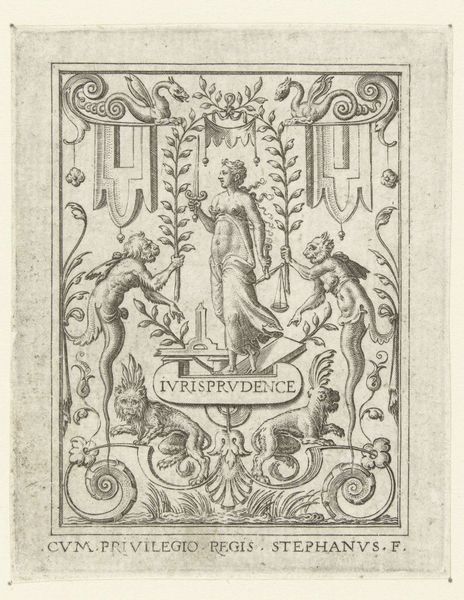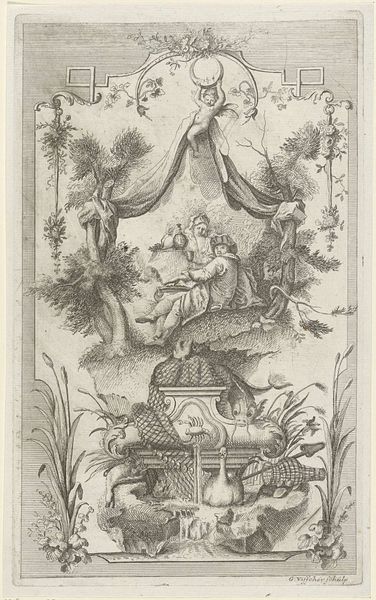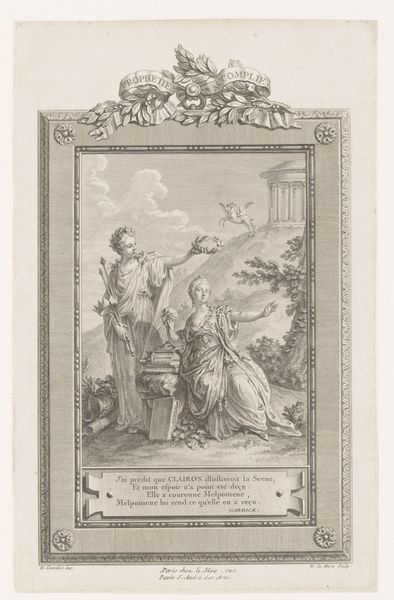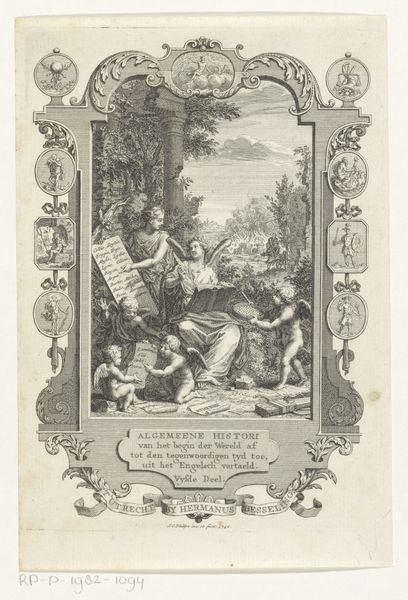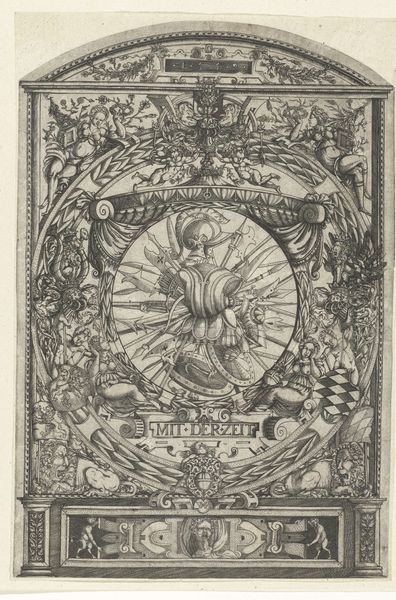
Heilige Elisabet van Hongarije met kruik en vogel in omlijsting met ornamenten 1581 - 1656
0:00
0:00
nicolaesdebruyn
Rijksmuseum
print, engraving
#
portrait
#
narrative-art
#
baroque
#
pen drawing
# print
#
old engraving style
#
figuration
#
history-painting
#
engraving
Dimensions: height 190 mm, width 114 mm, height 291 mm, width 211 mm
Copyright: Rijks Museum: Open Domain
Curator: This engraving, held at the Rijksmuseum, presents Saint Elizabeth of Hungary with a pitcher and bird within an ornamented frame. The piece is attributed to Nicolaes de Bruyn and dates back to between 1581 and 1656. Editor: The composition has such a tranquil, almost melancholic mood. The saint's gentle gaze, the muted tones of the engraving, and even the presence of the bird evoke a sense of peaceful contemplation amidst worldly suffering. Curator: Indeed. The visual symbols tie directly into the narrative surrounding Elizabeth of Hungary’s life and legacy. The pitcher alludes to her acts of charity, specifically her work tending to the poor and sick. It directly recalls medieval iconography associated with selfless dedication. The bird...likely a dove... can also connect to images of peace or the Holy Spirit. Editor: From my perspective, these attributes offer far more than surface-level meaning. Elizabeth’s acts were inherently political gestures within the structures of her time. Giving away alms would challenge existing notions of class, privilege, and wealth distribution. To understand that historical tension enriches the viewer’s experience. Curator: Precisely. Looking at the figures in the background, we witness this dedication. People line up seemingly to be greeted or cared for. These narrative components root the piece not just in hagiography but the material realities of serving others. Editor: I am struck by how de Bruyn interweaves sacred and secular motifs into the broader ornamental frame. Putti mingle amongst ornate designs that recall classical themes—in effect he builds a symbolic architecture where faith and worldly power coalesce. The visual impact underscores complex historical realities, particularly surrounding the influence of religious narratives and political ideologies. Curator: It certainly prompts thoughts on how women's roles, particularly in positions of power or sainthood, become constructed and then reconstructed through time. How much agency does Elizabeth, or this depiction, actually possess in a world shaped by patriarchal norms? Editor: The image creates many such thought-provoking entry points to connect and question social and historical issues through its compelling language of visual symbols. Curator: And it underscores the value of unpacking how art functions as an active agent within these ongoing discussions. Editor: Absolutely. Analyzing how and why certain figures are memorialized and what social work the representations themselves undertake continues to remain extremely crucial.
Comments
No comments
Be the first to comment and join the conversation on the ultimate creative platform.
